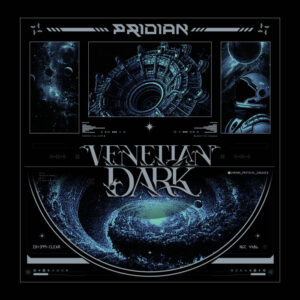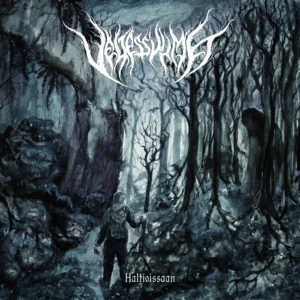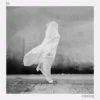Dawn
Riot In The Attic
•
December 29, 2020

On November 13th, 2020, RIOT IN THE ATTIC, a three man band hailing from Cologne, Germany, debuted their first full length release entitled "Dawn". This release follows a year two-thousand seventeen E.P. release entitled "Under the Sun"; and this release follows a year two-thousand sixteen E.P. release entitled "Lost and Found". While the band may prefer to avoid musical classification–considering the various subdivisions, RIOT IN THE ATTIC self identify themselves to be "The link between hard rock and stoner rock"; truly, self identification is easier to promote than to forbear social misclassification.
The first track, entitled "Head High'' opens with as near to acapella singing as possible–save the rhythmic accompaniment of clapping hands as a percussive pulse with a connotation of a perfectly relaxed tune. This introduction endures for about twelve seconds - before guitars with a grungy distortion enter the mix - still with a rocky-roadhouse-rhythm-n' blues-based style. The blues influence is too prevalent to call it a mere background, yet it is nearly sufficiently present to call it a forefront - but not quite that either. Dan's vocal style sustains a slight "back of the throat treble" nearly reminiscing Paul McCartney's vocal style with THE BEATLES–yet it is difficult & unwise to accurately presume any sort of conscious imitation.
"Black Swan" - the second album track, opens with Flo on the cowbell on alternate beats against Dan on a short bluesy minor third guitar lick while Flo rests. Tobi enters on Bass as the song reaches the main riff. Verses proceed with an interesting notion of full beat rests (similar to a rock/blues style) - and this is a welcome change rarely heard in modern rock. Prior to the guitar solo - listeners enjoy real unexpected resolutions of chordal suspensions within the structural progression of the harmony.
"Astrovision" - the third album track opens with Flo utilizing a standard snare drum rim shot drum beat–yet the rim shots are used for a quieter presence of the drums (and, more importantly, to soften the influential snare). Dan's guitar arpeggiates the chordal harmonies with a slight & subtle distortion until about forty five seconds pass–as Tobi pulls the band together to an exposition of the main song riff - this exposition may be better titled "explosion", due to the sudden burst of a fully distorted rhythm guitar. Clearly - the main riff suggests this song to be the heaviest song on the album. Further rests among either guitar or drums allow the song to progress musically, rather by a mere heaviness. A thematic guitar solo above the heavier riff first introduced by Tobi (through the influence of Dan's more fully distorted rhythm guitar cannot be overstated as a contribution to the heaviness).
"Pleasureland" - the fourth album track opens with a pedal tone that descends between the "A" and "E" guitar strings. Chords fulfill & harmonize the opening riff to complete the riff structure. At about three minutes into the song - Dan arpeggiates the chord progression - resounding & sustaining the tonic key root–while Tobi & Dan descend through the structural harmony: this is refreshing and innovative in the genre of rock-&-roll, amidst all genres, self identifications & mis-classifications. At about four minutes, an acoustic guitar replaces the amplified, electrified distortions of Jim Marshall.
"Thalassa" - the fifth album track opens with a near three minute introduction of seconds & ninth chords - and trebly guitar sounds that almost resemble Indian Sitars. The listener hears fingers slide along unfretted, yet slightly distorted, unwound, higher guitar strings - that ascend and descend to-&-fro the tonic key. At about three minutes into the song, Dan enters with a distorted rhythm guitar sound; over which, he solos over the root pedal: this solo includes chromatic melodies–again sometimes reminiscent of the Indian Sitar, and chromatic modal shafts, even with subtle influences of Jimmy Page. The aforementioned blues influence among the earlier album tracks is all but absent.
"Vortex" - the sixth album track begins with a heavier distorted rhythm guitar & bass mix; and accordingly, is among the heavier tracks of the album. At about two minutes-fifteen seconds, Tobi has a momentary bass solo that Flo quickly augments with motions of a simple yet fast drum beat. Dan enters at about two and one half minutes with a bluesier-style solo that Flo uses the snare drum to accompany - earning "Vortex" to be my album favorite.
"Be Calm" - the seventh album track begins with a short guitar lick - then uses a short chord progression to enter into the main song riff. The guitar solo initially begins at about two minutes-seventeen seconds–and this is most;y thematic variations juxtaposed with the main riff: this lasts until about two minutes and twenty seconds when Dan sings the last line of the first refrain "and the lies will leave us all"; the thematic variation continues until about two minutes forty-seconds when Dan play's an improvised lick that modulates into a second guitar solo–a traditional improvised guitar solo, that, while blues based–evolves more into his own individual style as a rock guitarist.
"Between the Lines" - the eighth album track opens with Flo providing a quick, yet subtler beat without overt accents. This is another rockish tune devoid of blues influence. The most prevalent lyrical theme that recurs toward the song end is "We're all waiting for a fairytale to happen" - to an eventual "we're all waiting..." but without stating "fairytale ending". For "Call the Void" - the ninth album track - Dan plays the guitar riff - and tonises this motive within octaves. The song progresses into the verses with a stylistic use of chromaticism. Dan uses occasional electronic delay versions of his own voice to fulfil the mastered vocal track - and it seems that Tobi &/or Flo may sometimes accompany him with backing vocals.
"We Know Nothing" - the final album track opens with guitar pedal tones and slow arpeggiations with leading tones. As Dan begins to sing "We Know Nothing" / "We Know Nothing at all" - with repetitions of the aforementioned leading tones (also suspensions), both of which serve to add dissonance as Dan annunciates–perhaps even reverberates this lyrical theme. Dan "planes" through chords above the pedal tonic–chords that almost add a "metallic, rebellious edge" - as through the unwavering theme to threaten our lives are the penultimate dangers of human ignorance. This section, the main riff of the song - recapitulates, from which the song eventually fades with guitar embellishments that utilise slides & chromatisms nearly remininscient to the Indian Sitar.
RIOT IN THE ATTIC promotes the idea of concert performance & live music–through which, they endeavor growth; and while this listener is saddened that the global COVID-19 pandemic should curb this mission, I wish them hope for success with the hope of universal immunization through vaccination.
9 / 10
Almost Perfect
Songwriting
Musicianship
Memorability
Production

"Dawn" Track-listing:
1. Head High
2. Black Swan
3. Astrovision
4. Pleasureland
5. Thalassa
6. Vortex
7. Be Calm
8. Between The Lines
9. Call The Void
10. We Know Nothing
Riot In The Attic Lineup:
Dan Padilla Cencillo - Vocals & Guitars
Tobi Siebel - Bass
Flo - Drums
More results...





















